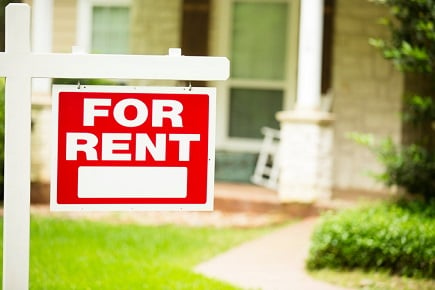The number of renting households declined for the first time since 2004

While rents rose 2.4% over the course of 2017, the number of renting households declined for the first time since 2004, according to an annual review of the US rental market released by ABODO.
Citing Harvard University’s Joint Center for Housing Studies (JCHS), ABODO said more than a third of US households are renters, with about $43 million households renting across the US as of the middle of 2017. The estimate comes despite a rebound in homeownership from its low levels in the last decade, with renting continuing to outpace
ownership.
However, ABODO said 2017 marked the first decline, although slight, of renting households in 13 years, citing a JCHS report. The number of renting households had been continuously increasing since 2004.
The decline in renting households in 2017 came as rents rose over the same period. At the end of 2017, one-bedrooms had a national median rent of $1,040, a 2.4% increase. Meanwhile, the national median rent for two-bedroom apartments was $1,252 in December, an increase of 3% from its level in January.
While rents rose nationally, there were regional variations. Twenty-eight states and the District of Columbia recorded rent increases, while 21 states saw declines. Only South Dakota saw rents remain unchanged.
Rents in Connecticut fell the most, decreasing at an average of 3.8% per month. Washington and New Mexico also recorded some of the biggest drops in rent, with decreases of 1.3% and 1.1%, respectively. Rhode Island’s 7.8% average rental hike was the highest, followed by 5.3% in West Virginia and 5.1% in Wyoming.
Despite an average 0.9% monthly decrease in rents in 2017, San Francisco continued to have the highest average monthly rent in the US at $4,373.
Related stories:
Skyrocketing rents make mortgages more attractive
More people than ever are sharing homes
Citing Harvard University’s Joint Center for Housing Studies (JCHS), ABODO said more than a third of US households are renters, with about $43 million households renting across the US as of the middle of 2017. The estimate comes despite a rebound in homeownership from its low levels in the last decade, with renting continuing to outpace
ownership.
However, ABODO said 2017 marked the first decline, although slight, of renting households in 13 years, citing a JCHS report. The number of renting households had been continuously increasing since 2004.
The decline in renting households in 2017 came as rents rose over the same period. At the end of 2017, one-bedrooms had a national median rent of $1,040, a 2.4% increase. Meanwhile, the national median rent for two-bedroom apartments was $1,252 in December, an increase of 3% from its level in January.
While rents rose nationally, there were regional variations. Twenty-eight states and the District of Columbia recorded rent increases, while 21 states saw declines. Only South Dakota saw rents remain unchanged.
Rents in Connecticut fell the most, decreasing at an average of 3.8% per month. Washington and New Mexico also recorded some of the biggest drops in rent, with decreases of 1.3% and 1.1%, respectively. Rhode Island’s 7.8% average rental hike was the highest, followed by 5.3% in West Virginia and 5.1% in Wyoming.
Despite an average 0.9% monthly decrease in rents in 2017, San Francisco continued to have the highest average monthly rent in the US at $4,373.
Related stories:
Skyrocketing rents make mortgages more attractive
More people than ever are sharing homes



